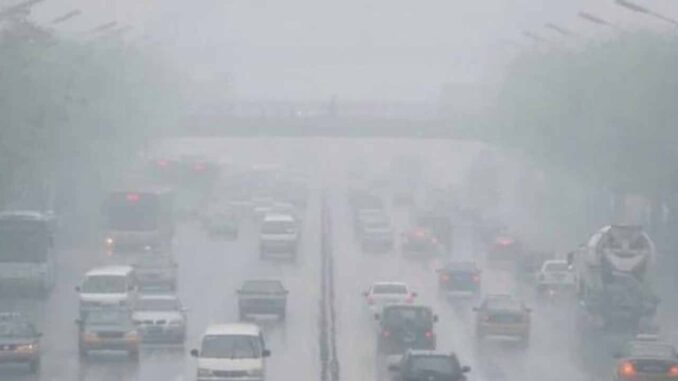
Warning by climate and health experts on the negative effects of low harmattan observed in the country should be taken more than casually, as an unfolding long term consequences of global climate change, which Nigeria may have to deal with in the near future. As every country innovates ways to contain the hazards of the climate, Nigeria cannot afford to dither, if she wants to avoid complications.
The harmattan weather with its characteristic dry dust haze and low visibility over Nigeria’s airspace at this time of the year has been almost non-existent for about two months. Apart from arousing curiosity, the situation is alarming because the abnormality of the weather seems to be recurring and worsening by the years.
Harmattan is a dry and dusty north-east trade wind that originates from the Sahara Desert. The direction of the wind follows a seasonal shift in atmospheric high pressure to the north. The December 23rd solstice coincides with the northern winter.
In 2019, unusual heavy downpours marked the first month of the year, especially in the South-West and some other southern states. That time of the year is normally characterised by high temperatures, scorching sun and heat wave. The rains, however, precipitated a fairly pronounced harmattan season, which is pointedly missing this year.
While the hot weather is generally attributed to climate change, the authorities in the country, sadly, are not adequately responding to its creeping devastations. In view of the serious portent, it is high time Nigeria becomes more proactive. Annually, the seasonal harmattan phenomenon begins from late December, peaks in mid January and wanes by end of February. Dust haze normally envelopes the entire country’s skyline, forming a thick blanket of fluffy, fine airborne particles. The associated weather condition impacts on agriculture, health and socio-economic life in the country. This year has been different.
Under normal harmattan season, air travels are unpredictable as booked flights are highly prone to cancellations or delay, depending on air visibility. The harmattan disrupts the services of many struggling airlines which, this year has been thankful for the respite provided by low harmattan. Surprisingly, the Nigeria Meteorological Service (NiMet) appears to be silent with regard to the unusual situation. On their part, members of the public have simply alluded to climate change as explanation for the experience.
At a time people should be feeling chilly, Nigerians are complaining of heat day and night. Indeed, the situation is causing concern across the country as meteorologists and medical experts warn of its dangers on human and natural resources. For instance, from an average temperature of 33 degree Celsius and 70 per cent humidity in Lagos to 39 degree Celsius and 11 per cent humidity in Maiduguri, excessive sweating and heat rashes are rampart these days, especially among children.
A public health physician and Head, Lagos State COVID-19 team, Prof. Akin Osibogun, reportedly said the issues of climate change globally had caused weather changes. The changes, he said, would affect agricultural production and subsequently nutritional status and health. Extremely hot and dry weather, he added, could result in heat exhaustion and dehydration in humans, which poses a risk to the kidneys. To avert this, he urged members of the public to take plenty fluids, preferably water. Medical experts warn that the extreme weather could lead to more dire consequences, such as kidney failure, stroke, excessive bleeding and skin cancer in Albinos.
Harmattan is characterised by chilly condition, poor visibility, low temperatures, diffused radiation and low relative humidity. All these physical characteristics affect public health as well as socio-economic activities. Asthmatic patients, in particular, are prone to suffer during harmattan. Such people are advised to remain indoors and reduce outdoor exposure. The chill, coupled with the longer nights induces longer hours of sleep. Sweating and heat rashes that afflict many from scorching heat disappear during harmattan.
One major characteristic of harmattan is the prevalence of dust particles on furniture, cars, rooftops, windowpanes and net, a thin film of fine dust settles. Virtually every exposed surface is made untidy. The harmattan has some positive sides.
For example, a severe harmattan season is a precursor to good agricultural activities and rich harvest. Fruit trees like mangoes, avocado, guava, among others blossom with flowers and fruiting. A severe harmattan heralds good harvest. Traditionally, farmers use the period to clear farms and get them ready for planting.
In view of its wide implications, and the corresponding consequences of its low occurrence, the authorities, such as NIMET ought to be upbeat in keeping the people informed and educating them accordingly. It would appear that the organisation is not adequately equipped to carry out its statutory duties. This is not acceptable and calls for intervention by government, as NIMET should be in a position to educate members of the public on the implications of changing weather patterns on their lives in general.
END

Be the first to comment